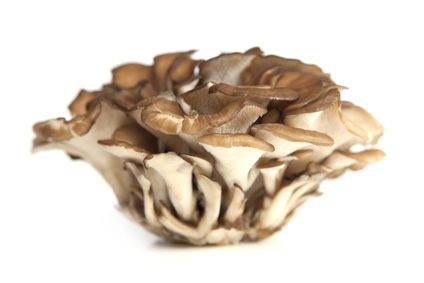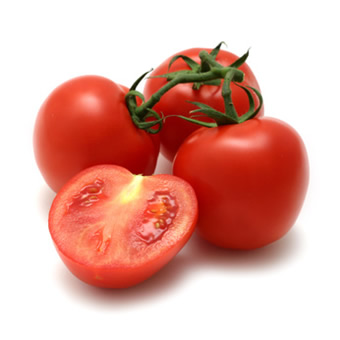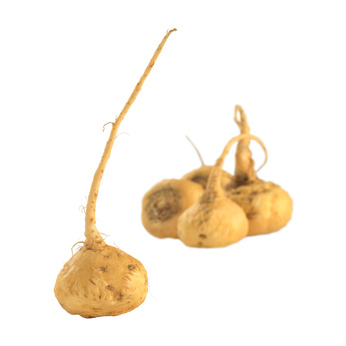The scientific name for Maitake is Grifola frondosa. Maitake mushroom is widely regarded in traditional folk medicine as a potent immune food. Maitake polysaccharides contain a unique beta-1,6 1,3 glucan structure. The glucans and polysaccharides in it stimulate the immune system by increasing the activity of the T-helper cells. A polysaccharide is a complex carbohydrate made up of smaller sugar molecules. These sugars stabilize blood pressure, blood sugar, and have an effect on free radicals. The primary polysaccharide, beta-D-glucan, is well absorbed when taken orally and is currently under review for the prevention and treatment of cancer, and as a supportive tool for HIV infection.
Maitake Benefits
The most effective ingredient in the mushroom is its beta-glucan, a polysaccharide compound that boosts the immune system through the activation of macrophage cells, natural killer cells and T-cells. The mushroom’s beta-glucan content works to promote important immune system functions, effectively activating white blood cells that fight off microorganisms that cause disease, including cancer.
Maitake Cancer Research
Specific polysaccharides, known as beta-D-glucans, are also suspected to stimulate the immune system to fight cancer. An extract of these helpful glucans was patented and is known as the maitake D-fraction. Maitake D-fraction, a bioactive extract of maitake mushrooms, has shown anti-tumor activity in tumor-bearing mice, reducing cancer proliferation. The resulting fraction, called D-fraction, is a standardized form of polysaccharide compounds beta-1,6 and beta-1,3 glucane and a protein with a molecular weight close to 1,000,000. In clinical trials Maitake D-fraction has been shown to have an anti-tumour effect on tumour-bearing mice, with enhancing cytotoxic activity of macrophages and elevated production of interleuken-1 leading to the activation of cytotoxic lymphocytes. Unlike many other mushroom extracts that have to be injected intravenously, Maitake D-fraction has a strong ability to inhibit tumor growth when given orally as well.
In vitro research has shown maitake can induce apoptosis in cancer cell lines as well as inhibit the growth of various types of cancer cells. In a study on the preventive potential of maitake, mice were injected with a carcinogenic substance. 15 days after the injection, 10 mice were fed with 0,2 mg of fraction D of maitake during 15 consecutive days. The control group received a saline solution only. After 30 days, the number of mice with cancer was 30,7% in the group which had received maitake and 93,2% in the control group. In 2009, a phase I/II human trial was conducted by Memorial Sloan-Kettering Cancer Center, and it showed that maitake extract stimulates the immune systems of breast cancer patients. Colon cancer is significantly inhibited by maitake mushroom, according to a Japanese study published in the October 2010 ‘Cancer, Immunology, Immunotherapy‘ journal.
 In a clinical study published in 1996 Townsend Letter for Doctors and Patients, a maitake extract was found to be effective against leukemia and stomach and bone cancers. In China, sixty-three patients with lung, stomach, or liver cancers or leukemia who took four capsules of maitake extract three times daily before meals for one to three months showed an anticancer effect. A recent study at New York Medical College also showed that maitake D-fraction destroyed prostate cancer cells in the test-tube.
In a clinical study published in 1996 Townsend Letter for Doctors and Patients, a maitake extract was found to be effective against leukemia and stomach and bone cancers. In China, sixty-three patients with lung, stomach, or liver cancers or leukemia who took four capsules of maitake extract three times daily before meals for one to three months showed an anticancer effect. A recent study at New York Medical College also showed that maitake D-fraction destroyed prostate cancer cells in the test-tube.
MaitakeGold 404® represents the culmination of 18 years of research by Dr. Nanba and contains Dr. Nanba’s patented maitake mushroom extract, the most therapeutically potent and effective maitake extract ever developed by Dr. Nanba for broad spectrum immune stimulation. Additionally, clinical research with maitake often utilizes the mature fruiting body with a small amount of vitamin C. This is added to enhance the effects of maitake, since vitamin C has its own immuno-supporting properties. Combination therapy with maitake and vitamin C improves effectiveness of conventional cancer therapies, according to a study published in the July 2009 issue of the International Journal of General Medicine.
Maitake Mushroom and HIV
In recent years maitake has gained popularity in the treatment of viral diseases including hepatitis, HIV and Epstein Barr infection. In 1990, the National Cancer Institute in America determined that maitake gave 100% protection to uninfected T cells exposed to the HIV virus in the test tube. Preliminary anti-HIV activity in vitro on Maitake D-fraction has been studied at both the National Institute of health in Japan and National Cancer Institute along with research at independent laboratories and clinical settings. At a conference , 1992, in Fukuoka, Japan, Dr. Hiroaki Nanba announced his findings that a maitake extract was able to prevent HIV destruction of T-helper lymphocytes by as much as 97% in vitro.
Maitake & Liver
Maitake has been shown to promote healthy lipid metabolism in the liver. Animal studies suggest that maitake mushrooms have the ability to alter lipid metabolism by inhibiting both the accumulation of liver lipids and the elevation of serum lipids. Maitake contains properties to protect the liver from damage and may even reverse damage that has already occurred. It also also has been found to help protect the liver from detrimental effects of hepatitis. A concentrated extract of maitake, was tested on a group of 32 patients with chronic hepatitis B. The maitake group showed a recovery rate of 72% as compared to 57% in the control group.
Maitake Mushroom and Diabetes
People with Type 2 Diabetes have been found to benefit from maitake mushrooms. A specific, high-molecular polysaccharide called the X-fraction appears to be the active compound with anti-diabetic properties. In two reports published in 2002, maitake was found to reduce insulin resistance in rats. A health condition known to raise your risk of type 2 diabetes, insulin resistance occurs when the body fails to respond properly to insulin. Additionally, people with non-insulin-dependent diabetes mellitus may also benefit from Maitake, according to researchers Hiroaki Nanba and Keiko Kubo, authors of ‘Mushroom Biology and Mushroom Products‘.
How to Use Maitake Mushrooms
Maitake D-fraction is available in liquid extract, tablet, and capsule in health food stores, although the amount of beta glucan contained in each form may vary. Maitake, like all of the other medicinal mushrooms, must be prepared as a hot water extract in order to be effective for supporting immune health. Most of the research on maitake D-fraction has been done in Japan using an injectable form of the extract. Maitake Gold 404 dosage: To support people undergoing chemotherapy, the dosage is typically, 0.5mg to 1.0mg for every 1kg of body weight per day. That translates to a dosage of approximately 35-70mg of the MD-fraction. The daily dosage recommendation for prevention is typically 5 to 15mg of the D- or MD-fraction.
Side Effects
At this time, there are no known adverse reactions when taken in conjunction with medication. If pregnant or lactating, consult your physician before taking this product.
 Free-radical damage can become apparent in the eyes through the development of cataracts or macular degeneration. Studies provide evidence that nutritional antioxidants slow down the progression of cataracts and age-related macular degeneration. Tomatoes may protect the eyes by deterring macular degeneration, a cause of vision loss in older people, suggests new University of Maryland research that found high levels of lycopene in eye tissue.
Free-radical damage can become apparent in the eyes through the development of cataracts or macular degeneration. Studies provide evidence that nutritional antioxidants slow down the progression of cataracts and age-related macular degeneration. Tomatoes may protect the eyes by deterring macular degeneration, a cause of vision loss in older people, suggests new University of Maryland research that found high levels of lycopene in eye tissue. Supportive evidence provided recently by scientists proves that mate tea has a positive effect on controlling weight and boosting weight loss. In Germany, it is a popular weight-loss aid and in France Yerba Mate is approved for the treatment of fatigue and as an aid in weight loss programs. A study done at The University of Lausanne found that people who use yerba mate actually burn more body fat as energy, therefore, significantly reducing their total weight. A study done in 1999 in Switzerland, found that yerba mate had a thermogenic effect, meaning that it seemed to increase the amount of body fat burned as energy.
Supportive evidence provided recently by scientists proves that mate tea has a positive effect on controlling weight and boosting weight loss. In Germany, it is a popular weight-loss aid and in France Yerba Mate is approved for the treatment of fatigue and as an aid in weight loss programs. A study done at The University of Lausanne found that people who use yerba mate actually burn more body fat as energy, therefore, significantly reducing their total weight. A study done in 1999 in Switzerland, found that yerba mate had a thermogenic effect, meaning that it seemed to increase the amount of body fat burned as energy. Maca root has been shown to increase male libido and sperm production in studies. Study data showed that maca increased sexual desire by 180 % and increased sperm count by 200%. Research has proven that it acts on certain areas of the body that produce hormones and energizing substances, which enhance libido and increase virility. The clinical study carried out by Gonzales from Universidad Peruana Cayetano Heredia demonstrates an 85% increase in the men’s total sperm count, as well as an increase in sperm motility and motile sperms quantity in men treated with maca. Research has demonstrated that maca root contains a chemical called p-methoxybenzyl isothiocyanate, which has reputed aphrodisiac properties. The hexanic extract of maca appears to be more effective at improving sexual performance in rats than methanolic and chloroformic extracts.
Maca root has been shown to increase male libido and sperm production in studies. Study data showed that maca increased sexual desire by 180 % and increased sperm count by 200%. Research has proven that it acts on certain areas of the body that produce hormones and energizing substances, which enhance libido and increase virility. The clinical study carried out by Gonzales from Universidad Peruana Cayetano Heredia demonstrates an 85% increase in the men’s total sperm count, as well as an increase in sperm motility and motile sperms quantity in men treated with maca. Research has demonstrated that maca root contains a chemical called p-methoxybenzyl isothiocyanate, which has reputed aphrodisiac properties. The hexanic extract of maca appears to be more effective at improving sexual performance in rats than methanolic and chloroformic extracts. Royal Jelly helps in regeneration of cells, repairs damaged tissues and rejuvenates the cells for function. Dr. H.W Schmidt, a researcher for the German Medical Association, said that royal jelly was the most prominent valuable, rejuvenatory substance for reviving the body. Dr. Schimdt found that elderly patients with hardening of the arteries improved as a result of royal jelly treatments. Dr. Saenz of the Pasteur Institute explained the fact that royal jelly is the riches source of a potent anti aging factor. Animal-based study, mice that were given royal jelly for 16 weeks lived longer and had stronger bones. Also, when royal jelly is applied topically as a on skin damaged by the effects of radium treatment, the skin heals rapidly and symptoms reduced.
Royal Jelly helps in regeneration of cells, repairs damaged tissues and rejuvenates the cells for function. Dr. H.W Schmidt, a researcher for the German Medical Association, said that royal jelly was the most prominent valuable, rejuvenatory substance for reviving the body. Dr. Schimdt found that elderly patients with hardening of the arteries improved as a result of royal jelly treatments. Dr. Saenz of the Pasteur Institute explained the fact that royal jelly is the riches source of a potent anti aging factor. Animal-based study, mice that were given royal jelly for 16 weeks lived longer and had stronger bones. Also, when royal jelly is applied topically as a on skin damaged by the effects of radium treatment, the skin heals rapidly and symptoms reduced.